
Wildbirds feel impact of humans in parks
Most of the time, people don’t think much about the impact their behavior can have on what surrounds them.
For example, we don’t often notice that tourism in popular national parks is affecting the natural environment.
|
At right, a campsite on Garden Key at Dry Tortugas National Park. Below, a bald eagle at Glacier National Park (Photos courtesy of the National Park Service). |
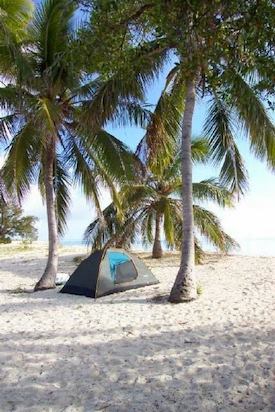 |
Visitors sometimes park where they are not supposed to, harming land and its grasses and wildflowers. Alarming noises made by tourists and their vehicles, snow mobile tours and more activities can damage the environment without people even noticing what they are doing and how harmful these things can be.
This issue can be seen close up. People’s acts are now affecting plants and animals, specifically wild birds.
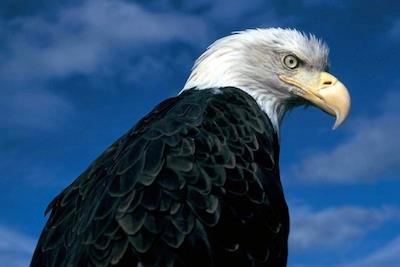 Steve Holmer, director of the Bird Conservation Alliance, states that tourism can harm birds by causing habitat destruction and degradation as areas are converted to hotels, parking lots, golf courses and so forth. But he also said “it can be a source of revenue to support conservation and habitat protection.”
Steve Holmer, director of the Bird Conservation Alliance, states that tourism can harm birds by causing habitat destruction and degradation as areas are converted to hotels, parking lots, golf courses and so forth. But he also said “it can be a source of revenue to support conservation and habitat protection.”
According Michael Hutchins, national coordinator of Bird Smart Wind Energy Campaign, tourism can certainly have many impacts on wildlife, including birds.
Hutchins says that “disturbance of nesting areas can decrease nesting success, feeding of birds can alter their behavior and hurt their nutritional status, and the construction of non-sustainable tourist facilities can alter and/or destroy important bird breeding and foraging habitat.”
This basically means that tourists who do activities (like take pictures, close contact, noises, feed animals) during the bird’s sensitive times of the life cycle, like, for example, during nesting season, can really affect and alter the bird’s behavior. It can create a great disturbance for them, although not every species is easily affected.
Hutchins agrees with Holmer, saying that when done right, tourism can be a major tool for conservation, as it provides an “economic incentive for conservation and can be less destructive than other types of human activities.”
The American Bird Conservancy (ABC) is a not-for profit organization with the mission of conserving native birds and their habitats throughout the Americas. It is the only U.S.-based group with a mayor focus on bird habitat conservation throughout the entire Americas.
|
At right, a seaplane at Garden Key in Dry Tortugas National Park. Visitors can also take the seaplane from Key West to the park (Photo courtesy of the National Park Service). Below, an eastern blue bird, Sialia sialia (Photo courtesy of Rodney Camm, National Park Service). |
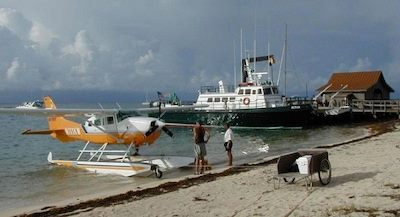 |
“Tourism ranges from critically important to wildlife to damaging. It all depends on the circumstances: what kinds and how much tourism, which animal species and their population conditions, and the habitat in question,” George Fenwick, ABC president, said.
He added that it would be wrong to form any general conclusions about ecotourism:
“Our organization’s partners in Latin America all use ecotourism to generate financial resources without which we could not afford to do nearly as much conservation,” Fenwick said, “Tourism can never be the only solution to organization’s financial needs, but are an important part of it. We are careful to limit tourism and to make sure that wildlife and habitats are not overly damaged.”
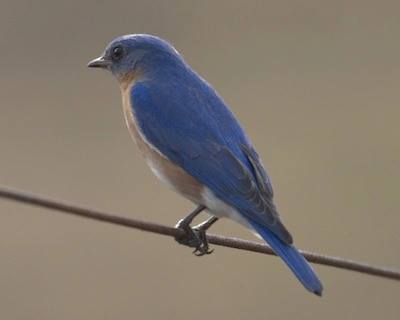 Fenwick has served as president and CEO since ABC’s founding in 1994.
Fenwick has served as president and CEO since ABC’s founding in 1994.
In many cases, the disturbance may be caused not only by individuals, but also more by the equipment they use to perform recreational activities. People make noises, but those produced by engines of motor vehicles and even motorboats around the National Parks are intense, loud noises that can be of extreme disturbance to animals in the park.
Those bird species that build floating nests on inland waters, such as the great crested grebe (Podiceps cristatus), are easily affected and alarmed by motorboats. Rowing boats, too, can agitate nesting areas.
Boating activities are one problem of many to lots of types of birds. An example of these situations would be the tourists taking boat rides or seaplanes in the Dry Tortugas National Park, which is s a national park in the Gulf of Mexico about 68 miles west of Key West.
The World Conservation Union, also known as the IUCN, includes the “Ecotourism Consultancy Programme,” which provides a centre of expertise for planning ecotourism development and recognizes the huge relevance of tourism and the many dangers that badly uncontrolled tourism can cause to the world’s natural areas and their accompanying cultural features.
Some bird species are of course much less sensitive to human presence.
Like said before, bird species will simply alter their behavior patterns if disturbance becomes extreme.
The artificial feeding tourists can also have severe consequences for social behavior patterns on birds.
Bruce Marshall, part of the membership services from the National Parks Conservation Association (NPCA), explained that the NPCA works with both developers and with government agencies to ensure that renewable energy projects are located on disturbed lands that don’t adversely impact wildlife corridors and migrating and resident birds.
| At right, the Royal Palm Visitor Center at Everglades National (Photo courtesy of Rodney Camm, National Park Service). Next, an Everglades cormorant (Photo by: National Parks Conservation Association). Last below, the Everglades freshwater prairie is a wildbird habitat (Photo courtesy of the National Park Service) | 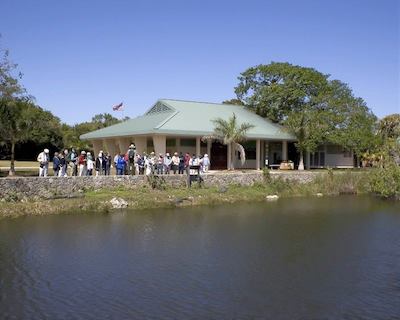 |
The NPCA has achieved a lot to pursue the solving of this issue.
“Over the past three years, our California Desert Field Office has partnered with the Palm Springs Bureau of Land Management and Friends of Big Morongo Canyon Preserve to host restoration events at Big Morongo Canyon Preserve, an internationally known Important Bird Area that is also a critical water source for Joshua Tree National Park’s bighorn sheep. The restoration events have removed invasive species, improved wildlife habitat and cleared trails,” Marshall said.
He also explained that last year the California Desert Field Office coordinated a migratory and breeding bird survey in Death Valley’s Riparian Areas.
The program was a pilot effort to obtain baseline data that can help the park assess bird populations in light of climate and other environmental changes.
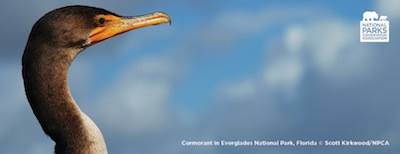 Apart from this Marshall also explains that The California Desert Field Office staff has also participated in the Christmas Bird Count and the Breeding Bird Atlas to help Joshua Tree National Park obtain relevant data on its bird populations.
Apart from this Marshall also explains that The California Desert Field Office staff has also participated in the Christmas Bird Count and the Breeding Bird Atlas to help Joshua Tree National Park obtain relevant data on its bird populations.
Inside the national lands and parks in Florida that are in trouble today we find the Everglades National Park, as well as the St. Marks National Wildlife Refuge, Dry Tortugas National Park, and Key West National Wildlife Refuge. Also, the Aransas National Wildlife Refuge in Texas.
A recent report prepared by researcher Howard Youth and published by the Worldwatch Institute, a U.S.-based environmental research organization, states that human actions are one of the main reasons bird life has deteriorated.
It says that in the last two centuries over 100 bird species have disappeared and explains habitat loss as having the most serious impact on bird life.
Agriculture also plays a big part in this situation. Farming methods limit birds’ nesting opportunities and reduce availability for them to get food.
The bald eagle is an example of one of the birds that is being threatened in today’s present day.
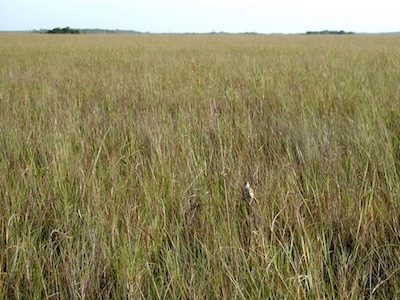 It was officially adopted as the U.S. national emblem on June 1782. The specie is now recovered, except for the Sonoran Desert population in Arizona, which is still threatened according to the NPCA.
It was officially adopted as the U.S. national emblem on June 1782. The specie is now recovered, except for the Sonoran Desert population in Arizona, which is still threatened according to the NPCA.
Inside the threats these eagles suffer we find: habitat loss because of development in coastal areas, PCB poisoning, and shooting for feathers.
This bird is just one example of a lot that are sensitive to human activities. During the breeding season is when bald eagles are the most sensitive to these activities.
Limiting a variety of things like air tours, the amount of tourists during specific times of the year, plus educating the world about the issues the national parks are facing are things and measures that have to keep on happening in order for these animals and plants to be protected.
Actions like these ones will provide our future generations a better place for everyone because many of our national parks are being deeply affected by development, pollution, recreational uses, and other human activities.
Our parks and our wildlife are in jeopardy.

Comments are Closed